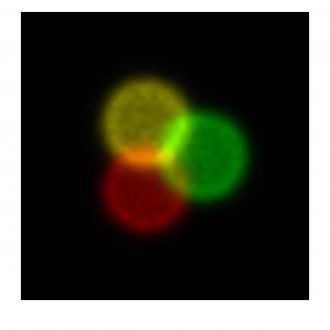optical diffusers engineered for optimal laser process results enable homogenization of non-uniform laser beams and shaping of the laser light. Broadband diffusers are polychromatic, cost effective and have high LDT.
Industrial high-power lasers have been applied to use in many areas of the industry from material processing to cosmetic treatments. These applications often use multi-mode laser sources due to their high output power and low cost, making them ideal for industrial use.
However, these laser sources generally have an uneven power distribution, either
spatially or temporally due to their multi-mode nature. This uneven distribution makes many of these applications, such as laser welding, surface treatment, and cosmetic treatments, imprecise or unstable. This is intolerable in today’s high-end standards.
To receive an evenly distributed laser beam, diffuser optics are often used.
What are laser light diffusers and how can they their diffusion profile be engineered?
laser light diffusers are a special class of diffusers with pre-engineered scattering profiles. Unlike ground glass or other optical homogenizers, that just scatter the light without shaping, a properly engineered optical diffuser can create complex light shapes including round, rectangular, and line flat-top energy distributions.
Such laser Ddiffusers take any input laser beam, regardless of intensity profile, and via refractive or diffractive optics redistributes it evenly in space. Typically, the beam is overlayed on itself multiple timers, creating the engineered diffusion profile desired.
Why are laser beam homogenizers important to many industrial uses?
Without a high-performance laser light diffuser, a laser beam is often non-uniform, especially for higher power, multimode lasers. These beams have locally high and low peaks in laser power distribution. When using high power lasers (like the ones used in industrial applications) these alterations in intensity can affect processes, such as local burning in material hardening for high peaks or unsoldered spots when applying laser welding for low energy areas. A laser light diffuser can even the intensity distribution, ensuring no undesired processes like these take place.
Diffusers engineered for laser processing in aesthetic treatments
Diffuser optics are used throughout the laser skin care and aesthetics industry. Lasers are used in this industry for applications such as tattoo removal, hair removal and body contouring. Much like industrial applications, the problem of an unevenly distributed beam is present here as well. High intensity regions can make healing time from skin treatment longer or even scar the skin. Using a laser beam homogenizer can make sure the energy is distributed evenly throughout the treated area and no damage is done to the patient. Furthermore, if different treatments requiring different wavelengths are needed, they could be done using a single machine thanks to polychromatic diffusers engineered to generate the same spot shape and size regardless of wavelength , eliminating the need to change the laser light diffuser.
How can diffusers be engineered to be more robust and produce better performance?
Laser light diffusers and laser beam homogenizers have had a revolution in their field with the development of diffusers that are engineered for broadband use and high performance, using special diffuser optics. These broadband hybrid diffusers, such as Holo/Or’s BD diffuser family, are flat-top beam shaping micro-refractive lens array that have added diffractive modulations. This helps them eliminate the regularity artifact that plague standard lens array diffusers, creating a truly uniform, flat top shape.
These broadband diffusers are robust to wavelength variation, have high LDT, and due to their wafer based production process are cost effective at higher volumes compared to other types of high power diffusers .
Broadband diffusers can be made on Polymer on Glass (POG) as well as UV grade fused silica and can offer diffusion angles (FWHM) up to 30 degrees.
Other advantages these diffusers provide include:
- Similar performance for wide wavelength spectrum from IR to UV.
- High efficiency.
- No Zero Order.
- Robustness and compatibility with the same optical set-ups used for micro lens arrays and diffractive diffusers.

TL; DR – Q&A SUMMARY
What is a Diffuser engineered for optimal process performance?
A diffuser engineered for optimal process performance is an optical element which can disperse laser light evenly in a predetermined pattern and operates for a broad spectrum of wavelengths and single-mode lasers with high efficiency.
Why are laser light diffusers important to industrial uses?
Laser light diffusers are important to industrial uses because uneven distribution of light can cause areas of high and low concentration of laser light, resulting in unwanted processes and insufficient energy for processes accordingly.
Why are laser light diffusers important to aesthetics and skin care treatments?
Much like industrial uses, laser light diffusers make sure that the laser beam used for skin care and aesthetic treatments, are evenly distributed. Making sure an even process is applied to all areas, without any areas being damaged or scarred by high intensity areas, or areas remaining untreated due to insufficient power intensity in this region.
What are the main advantages of Diffusers engineered for optimal process performance?
Compatibility with a broad spectrum, high efficiency, no zero order, high LDT.
How can I integrate a Diffuser engineered for optimal process performance in my system?
This kind of diffusers come as a flat element of any desired dimension, compatible with opto-mechanics made for micro-lens arrays and diffractive diffusers.

